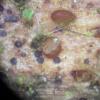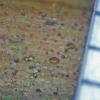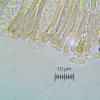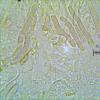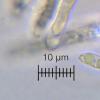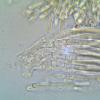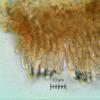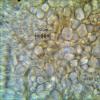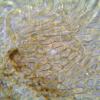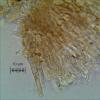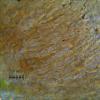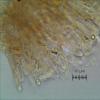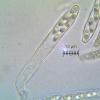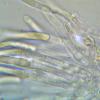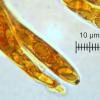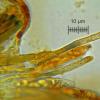
24-12-2025 17:08
Hulda Caroline HolteHello, I have found this propoloid ascomycete on

21-12-2025 09:32
Hello.A tiny ascomycete found embedded in wood in

21-12-2025 21:32
Pol DebaenstHello, Garden, Burgweg 19, Veurne, BelgiumOn 10/1

22-12-2025 23:38
Patrice TANCHAUDBonsoir, récolte sur un mur en pierre, apothéci

22-12-2025 00:47
Patrice TANCHAUDBonsoir, récolte à proximité du milieu dunaire
 Hi again,
Hi again,on that rubus-twig I found a second fungus of the Naevioideae. They are very difficult, I think.
This one opens with a lid like in Trochila, apothecia up to 0,2 mm, spores ellipsoid, hyalin with two large guttules and some smaller ones, (9-10) 9,63x3,94 (3,5-4) µm. Asci cylindric to clavate, 50-69 x 7-8 µm,porus-reaction Ikl positive, dull-violett to blue, biseriat with croziers. Paraphyses with strongly refractive content, cylindrical, 4 µm wide. Marginally hairs? up to 45 x 4 µm, 5 cells, 4 are light brown, the cell at the end is clavate, hyalin.
Thank you for your help.
Regards Maren
?

I overlooked this, sorry. It is not Naevioideae but a relative of Trochila as you compared. Hysterostegiella would be an option, but the paraphyses are there always lanceolate. H. dumeti would be on Rubus but has much smaller spores with a low oil content (as also all the other Hysterostegiella species treated by Hein 1983).
I know a similar fungus, in which I never saw a lid like here, though it is erumpent and pushes the epidermis aside, see HB 3802. I used to identify this at first as Duebenia cf. blyttiana, but only until I studied the type of it. Now I have it as "Duebenia-like" in Hysterostegiella, though it could better fit in Trochila. In my HB 5801 the paraphyses are actually slightly lanceolate. Contrary to yours the asci are alway inamyloid there.
The excipulum is covered by crystals. Is this also in yours? I think one of your middle pics show crystals.
Zotto
